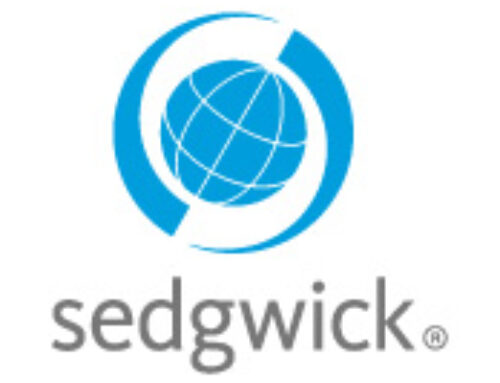 April 2021 BWC News
April 2021 BWC News
from Sedgwick
“Discipline is choosing between what you want now and what you want most.” ~Abraham Lincoln
We are excited to announce that CareWorks Comp is now named Sedgwick as of March 1, 2021. As Sedgwick, our commitment to Ohio employers remains as strong as ever. With more than 3,000 colleagues in Ohio, backed by the global resources and expertise of Sedgwick, we have the best claims solutions to help your business mitigate risk and reduce costs.
You can learn more about Sedgwick at Sedgwick.com/OhioTPA.
Click here to download this page as a PDF.
FREE April Webinar: Ohio State Fund Workers’ Comp
Join us for our first-ever virtual Ohio State Fund seminar!
We know you are busier than ever navigating constant challenges related to workers’ compensation. We are here for you. The pressure of understanding your exposures and managing claims can be challenging. In times like these, extra insight makes all the difference.
We invite you to spend a half-day with our industry experts from Sedgwick to address current issues relating to workers’ compensation, safety and unemployment.
During this free event you will learn about:
- BWC updates
- Unemployment during this unprecedented time
- Cost savings through coordinated claims management
- OSHA: mitigating and preventing the spread of COVID-19 in the workplace
- Taking a comprehensive approach to managed care
- This half-day seminar qualifies for two-hour group/group retro safety credit through the Ohio Bureau of Workers’ Compensation.
Two identical sessions are available to accommodate schedules:
April 13, 2021: 9am – 12:30pmEST
Click here to register
April 22, 2021: 1pm – 4:30pmEST
Click here to register
Questions?
If you have any questions or issues with registration please contact Kim Laughlin.
2-Hour Safety Training Requirement for 2020 Policy Year Deadline is 6/30/2021
2020 Rating Year—BWC Rule—ORC 4123-17-68
Group Rated and Group Retro Rated employers who have had a claim from July 1, 2018 through September 30, 2019, have to complete a required two hours of safety training by June 30, 2021. BWC’s requirement applies to any allowed claim an employer had from 7/1/2018-9/30/2019, regardless of size or severity. Two hours is the minimum amount of safety training mandated by the BWC. Only one person from the employer needs to take this safety training. If an employer experienced more than one claim within this period, they are still only obligated to attend two hours of safety training. If an employer has multiple policy numbers, they must attend two hours of safety training per policy. For more information about all the Ohio BWC’s training opportunities, visit the BWC’s Learning Center at: BWC Learning Center Login
Please send Certificates of Completion showing your company name and BWC policy number to: ohio.group@sedgwick.com
Deadline Extended Again for HVAC Assistance Program: June 30, 2021
The Ohio BWC has again extended its deadline to apply for reimbursement for eligible expenses under their COVID-19 Indoor Air Quality Assistance Program to June 30, 2021. This federally funded program provides reimbursement for nursing homes, assisted living centers, and adult day centers that invest in air quality improvements that reduce the spread of COVID-19. This may include the costs of inspections, assessments, maintenance, and improvements to indoor heating, ventilation, and air conditioning (HVAC) systems. It also provides reimbursement for secondary devices designed to destroy bacteria, mold, and viruses. Read more, including eligibility requirements, on the BWC’s website.
Good to Know: Ohio BWC Division of Safety & Hygiene
Are you trying to reduce injuries in your workplace? Are you concerned about your employees’ health and wellbeing? Then be sure to check out all that the Ohio BWC’s Division of Safety & Hygiene (“DSH”) can do for you as an Ohio employer! The DSH offers free consultation services on safety, industrial hygiene, or ergonomics, as well as training, and they even have a library filled with educational videos and materials. For more information, be sure to check the DSH out here.
Sample Written Safety Program Templates
BWC’s Division of Safety and Hygiene (DSH) has created sample written safety program templates for employers to download and to customize to their operations. DSH utilized our safety experts from Loss Prevention Field Operations, including specialized consultants from the OSHA On-Site Consultation Program, and the Public Employment Risk Reduction Program to create an assortment of branded sample written program templates to share with employers.
Each template is laid out identically and has a welcome page with information on how to use the template. DSH Assistant comments provide added guidance, best practices, or links to resources or reference standards. Additionally, each sample written program template offers supporting documents for training, checklists, definitions, and more. Specific program elements and training information are located in separate sections of each template.
For free consultative assistance in creating and reviewing workplace safety policies, employers can reach out to DSH on their website, or by phone at 1-800-644-6292.
Important Deadlines:
- April 21, 2021: BWC premium installment due if your company is on a Monthly or Bi-Monthly Installment plan with the Ohio BWC.
- May 1, 2021: Notice of estimated annual premium sent to employers from the Ohio BWC.
- May 14, 2021: Last day to change your 2021 policy year estimated payroll amount and premium installment schedule at your www.bwc.ohio.gov online account.
OSHA Launches Program to Protect High-Risk Workers from Coronavirus
In response to President Biden’s executive order on protecting worker health and safety, the U.S. Department of Labor’s Occupational Safety & Health Administration (OSHA) has launched a National Emphasis Program (NEP) focusing enforcement efforts on companies that put the largest numbers of employees at serious risk of contracting the coronavirus. The program also prioritizes employers that retaliate against workers for complaints about unsafe or unhealthy conditions, or for exercising other rights protected by federal law.
NEP inspections will enhance the agency’s previous coronavirus enforcement efforts and will include some follow-up inspections of worksites inspected in 2020. The program’s focused strategy ensures abatement and includes monitoring the effectiveness of OSHA’s enforcement and guidance efforts. The program will remain in effect for up to one year from its issuance date, though OSHA has the flexibility to amend or cancel the program as the pandemic subsides.
For programmed inspections, the NEP will target high-risk industries for COVID-19. The primary targets for COVID-19 inspections remain in the healthcare and personal care industries, including physicians’ and dental offices, home healthcare, ambulance services, hospitals, including psychiatric and substance abuse hospitals, nursing care facilities, residential intellectual and developmental disability facilities, and retirement and assisted living communities.
For un-programmed inspections, which include inspections initiated based on complaints, referrals from media reports, reports from other agencies like local health departments or the Centers for Medicare & Medicaid Services, and severe incident reports such as in-patient hospitalizations and fatalities, OSHA will be prioritizing these cases for on-site inspections, especially allegations of potential worker exposures to COVID-19. This is in stark contrast to how OSHA handled the thousands of complaints received in the last year, most of which is treated through an informal process of allowing employers to self-investigate allegations related to COVID-19 and report back to OSHA their findings and detail the measures they had in place to protect employees. Most inquiries of this nature resulted in the closure of the cases without a formal inspection from OSHA. Fatalities cases also will be prioritized.
New to OSHA’s target list for this NEP are certain non-healthcare industries such as meat processing, poultry processing, supermarkets and other grocery stores, discount department stores, general warehousing and storage, temporary agencies, restaurants, and prisons and correctional facilities. OSHA also has identified a secondary list of non-healthcare essential critical infrastructure industries such as food and agriculture and manufacturing of food, beverage, wood, paper products, chemicals, energy sector manufacturing, plastic and rubber, mineral products, and metal manufacturing.
For questions or additional information please contact Jim Wirth, 614-546-7331 04 jim.wirth@sedgwick.com
Email Notices to Injured Workers Come from New BWC Address April 8
The Ohio BWC is transitioning to a different email delivery system called GovDelivery. Beginning April 8, injured workers who receive eNotices from BWC about claim payments will receive the messages from a new email address: OhioBWC@public.govdelivery.com.
This new system has a different look and feel than what injured workers are used to. If the injured worker doesn’t receive email notices when they normally would, ask the injured worker to please check their spam folder. If the injured worker sees the email there, have them mark it as “not spam” to receive future messages correctly. In the months to come, the BWC will continue to increase its use of electronic communications. If you or the injured worker has questions, call the Ohio BWC at 1-800-644-6292.
By Mid-April: Industrial Commission to Begin Video Hearings
Since the beginning of the COVID-19 pandemic, the Ohio Industrial Commission (IC) has been conducting administrative Hearings telephonically. There have been a number of connection problems by using this format, including random “dead spots” during some of the Hearings.
The IC has announced that by mid-April, it will transition to a “web conferencing solution” offered by Webex to conduct Hearings. This virtual format, which is similar to Zoom, will allow the parties to participate by video, which will be very helpful to employers and their representatives. Participants who do not have a computer or internet access can continue to participate by telephone. Additional information regarding this new format can be found at ic.ohio.gov/webex/.
Identity Theft and Fraudulent Unemployment Claims
The most prevalent pain point for employers over the last 3 or 4 months has shifted from the high volume of unemployment claims to managing a rash of fraudulently filed imposter unemployment claims. These are instances in which a bad actor has stolen someone’s identity and filed a claim for unemployment benefits. The Federal Trade Commission has reported a near 18-fold increase in fraudulent government documents from 2019 to 2020. This issue is currently impacting employers and their employees nationwide with the US Department of Labor inspector general’s office estimating that more than $63 billion has been paid out improperly through fraud or errors — roughly 10% of the total amount paid under coronavirus pandemic-related unemployment programs since March 2020.
What are some indicators of possible fraudulent unemployment activities?
Insure your employees are mindful of any documents from their state’s unemployment agency, especially in the event they have not recently filed a claim. These communications could include a “notice of password reset”, notice of “PIN” reset, receipt of bankcard, confirmation of direct deposit, request for information, or any other form or document from the unemployment agency.
What to do if it happens, and resources:
- Report to local law enforcement
- Take action to protect your credit report –
- Fraud alert
- Credit freeze
- Credit lock
- Continue to monitor your credit report or consider using a provider that specializes in credit protection and monitoring
- Utilize the following websites:
-
- DOL Unemployment Fraud Reporting –
-
- FTC Identity Theft Reporting –
https://www.identitytheft.gov/
April – SEdgwickJulia Bowling | Business Development Manager
Sedgwick
Dublin, OH
CELL 513.218.4062
EMAIL Julia.Bowling@sedgwick.com
www.sedgwick.com/ohiotpa | Caring counts®





